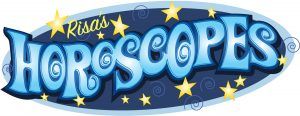San Diego County school districts have received $3.1 billion from the California Lottery since 1985. Part of they yearly funding is restricted in use, but districts have flexibility on how to spend unrestricted funds.
California Lottery Deputy Director for Public Affairs and Communications Carolyn Becker said voters created the lottery in 1984 and operations got underway in 1985, when the first tickets were sold.
“We are coming up pretty close to 40 years and written into the ballot initiative was the Lottery’s explicit purpose of our mission to raise supplemental funding for public education in California,” she said. “Supplemental can be hard to describe, but it basically means bonus money. I like to think of us as a giant community-based fundraiser. Just like you might go to a bake sale at your local school, the Lottery is that to scale. Supplemental money is added money. Not money that should be in the core part in any district’s budget. We are not designed to replace traditional revenue streams for critical pieces of a child’s learning experience.”
Becker said Lottery money is used in multiple ways because much of it is discretionary, but it should be used to pay for the “bells and whistles” that enriches a student’s learning environment.
“Maybe updated textbooks, gym equipment, band equipment, those added programs that really help kids learn, and make learning more fun,” she said. “Our dollars actually support public education all the way through the community college and university level. Many people associate Lottery dollars with K-12. That is why the Lottery was created and why we do what we do. I can tell you with confidence that every decision we make, whether it is what type of office supplies to buy, or how we maintain our operations, is with our mission in mind. We know that every penny that we do not spend is an extra penny for schools.”
Becker said the California Lottery is part of the state government, just like Caltrans or any other department, but is funded by the sale of tickets to the public.
“We develop games or participate in existing games and we raise money to fund our operations, and of course fund schools in that supplemental way,” she said.
“The decisions on how our Lottery money is spent is at the local level. We do not dictate these dollars. Those decisions, rightfully so, should be made by the local leaders who have a better understanding of any given district’s budget picture. California public education is funded in many complex ways, and because of the mix and diversity of California, the needs in a place like Los Angeles are very different than the needs in a place like Eureka. The law leaves those decisions up to the local decision makers.”
Becker said funds are distributed by the State Controller’s Office based on attendance in K-12, and the Lottery is “simply the fundraisers.”
Becker said she has heard many antidotes about funding teacher salaries.
“While some people may specifically scoff at that, I would actually offer to flip the script and think about hard it is to retain quality educators. You always hear about teacher salaries not being high enough,” she said. “I think that sometimes, somebody’s attitude comes from them not understanding it. I get that. We are almost 40 years old, so folks who voted for the Lottery back in the 80s are aging now. There is a whole swath of people now that we are trying to increase our awareness and transparency and help people understand it.”
According to the California Department of Education, in March 2000 Proposition 20 the Cardenas Textbook Act of 2000 was passed by California voters and amended the California State Lottery Act of 1984. Proposition 20 created restrictions for a portion of the lottery funds. More specifically, it required that beginning in 1998–99, 50 percent of the statewide growth in lottery funds for public education over the level set in the 1997–98 fiscal year be allocated on a per average daily attendance basis to community colleges and to kindergarten and grades one through twelve (K–12) local educational agencies (LEAs), consisting of school districts, county offices of education, and charter schools for the purposes of instructional materials.
According to the California Lottery:
Chula Vista Elementary School District received $116 million since 1985, and $6.2 million in 2022.
CVESD Communications Officer Giovanna Castro reported, “The Chula Vista Elementary School District receives two types of lottery funds, unrestricted lottery apportionment, and restricted (Proposition 20) funding. For the fiscal year 2022-23, the District received approximately $3.7M in unrestricted lottery funds. Those funds were spent on teacher salaries. For restricted (Proposition 20) funds for 2022-23, the District received approximately $1.4M for instructional materials for students, including textbooks and curriculums.”
National School District received $32 million since 1985, and $1.3 million in 2022.
NSC did not respond by print deadline.
Sweetwater Union High School District received $215 million since 1985, and $10 million in 2022.
SUHSD did not respond by print deadline.
Southwestern College received $74.5 million since 1985, and $4.2 million in 2022.
SWC Director of Financial Services Rizza Dela Cuadra said the district budget is $128.6 million.
“We receive 2 types of Lottery. The 2 pieces are fund 11 – unrestricted lottery funds (ranging from about $1.7m to $2.7m per year). This is not an augmentation of our state funding. Years ago, when this funding began, community colleges regular apportionment was reduced – so it just replaced funding, it was not an increase. And fund 12 – restricted lottery funds (ranging from $0 some years, then $649k, and last year $1.1m). The college uses both components of lottery funds for instructional supplies, equipment and software. We allocate some of the restricted lottery funds based on prioritized items from our Strategic Planning/Program Review process. The Strategic Planning Process involves all areas of the college—academic and business. The funding requests are prioritized by the level of innovation they provide to the college. No requests for operational expenses that can be paid for by a department’s/district’s budget, e.g., computers, flooring, furniture, etc. are considered for funding. It’s a complicated process, but the requests that do go forward are then prioritized for available funding, both lottery and other funding sources.”
CLARIFICATION: A previous version of this story was changed to clearly state California Lottery is funded by sales to the public rather than receiving public funding in the form of government payment.















